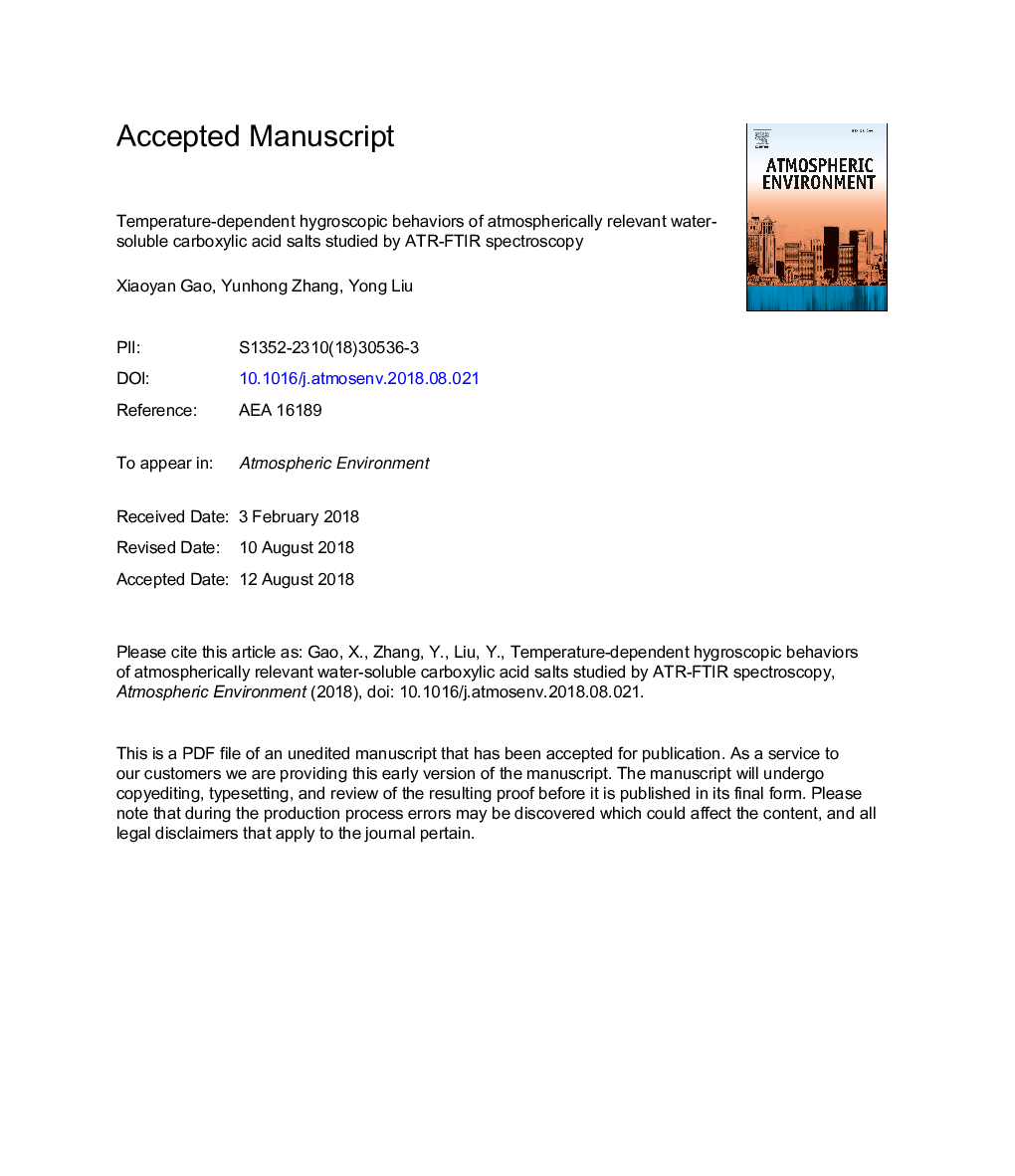| Article ID | Journal | Published Year | Pages | File Type |
|---|---|---|---|---|
| 8863412 | Atmospheric Environment | 2018 | 26 Pages |
Abstract
Model of aerosols and cloud formation processes requires extensive data on hygroscopic properties of water soluble organic species at lower troposphere relevant temperatures, which are ubiquitously found in atmospheric aerosols. Recent field studies (Kerminen et al., 1998) have revealed that sea salt aerosols can be efficiently chemically processed by water soluble carboxylic acids and lead to chloride depletion and formation of carboxylic acid salts. In this study, we report hygroscopic properties of four carboxylic acid salts, namely, sodium formate, sodium acetate, sodium oxalate and sodium succinate at temperatures commonly encountered in the lower troposphere ranging from 295.8â¯K to 270.0â¯K for the first time via attenuated total reflection Fourier transform infrared spectroscopy (ATR-FTIR). Deliquescence relative humidity (DRH) and efflorescence relative humidity (ERH) of these carboxylic salts as a function of temperature were derived using both changes in water-to-solute (WSR) data and changes in band positions and shapes of carboxylate asymmetric and symmetric stretch modes. Hygroscopic data were also fitted by polynomial and corresponding coefficients were obtained. Our results have shown that these carboxylic acid salts exhibit strong temperature dependence and they would deliquesce at a lower humidity and are more likely to remain deliquesced when they are elevated in the troposphere. Since all these carboxylic acid salts present very different hygroscopic behaviors at lower temperatures from that of NaCl, chemically processed sea salt aerosols by carboxylic acids are expected to have fairly different phase state, size, and water content, consequently affecting their reactivity, lifetime, and ability to serve as cloud condensation nuclei.
Keywords
Related Topics
Physical Sciences and Engineering
Earth and Planetary Sciences
Atmospheric Science
Authors
Xiaoyan Gao, Yunhong Zhang, Yong Liu,
